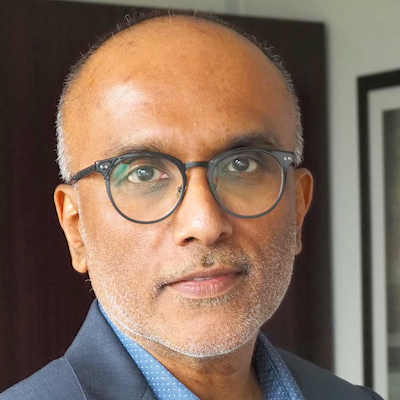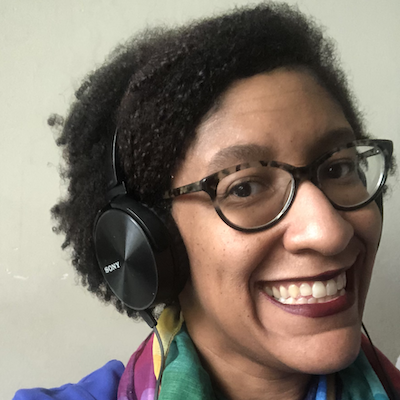Better paywalls won’t save us from what’s coming
In 2022, emerging technologies will change how users find and consume the news. The confluence of new search algorithms based on natural language models and consumer adoption of wearable devices will challenge the stability of the reader revenue models we’ve worked so hard to build over the past few years.
Whether the coming inflection point represents an existential threat or an opportunity for growth depends on how we, as an industry, respond.
Throughout the pandemic, we’ve celebrated the wins news organizations have realized in maturing their subscription and membership strategies. That success was driven by a surge in demand for reliable information in an exceedingly uncertain time and increasingly sophisticated tactics for deploying paywalls and marketing messaging.
But while we’ve focused on optimizing subscription flows, the technological and economic landscape has shifted. Over the summer, researchers at Google published a paper laying out a vision for a new type of search engine. Instead of delivering users a list of links in response to their query, a natural language model would directly summarize information from multiple sources on the Internet.
That aligns with a broader shift in how users are searching for information. More than 40% of internet users around the world say that they use voice search — whether deployed in AI assistants or as a feature in browser-based search engines. That suggests that consumers are getting more comfortable interacting with their devices by speaking commands (and hearing the results).
As we contend with how natural language search interfaces will upend what we know about audience strategy, we also need to prepare for a world where users increasingly consume news on wearable devices.
The evidence tells us that these trends will continue in 2022. Users will spend more time with devices without screens. They will get information directly from AI assistants that can summarize information without sending the user to a news website. The question for us is: What are we going to do about it?
How will we fund our newsrooms if users’ browsing habits change and they don’t hit paywalls as they do today? What’s the value of news if users engage with devices that give them an always-on stream of information? How will the value of our newsgathering change if users spend more time on immersive digital platforms that record their interactions automatically?
In 2022, newsrooms can take the time to think about where there is opportunity to grow in the midst of this uncertainty. Now is the moment to think about what kinds of skills we’ll need in the newsroom and on the business side to stay competitive. There is time to build partnerships, to develop new products, and to reconsider how our journalism creates value.
Yes, news is essential. Yes, our products deliver immense value to the communities they operate in. But news is just one of many services consumers subscribe to. Being essential to democracy is great, but we need to provide a product that people will invest in. Unless we build a future for our organizations, there’s no guarantee we’ll survive.
Sam Guzik leads product strategy for WNYC.

In 2022, emerging technologies will change how users find and consume the news. The confluence of new search algorithms based on natural language models and consumer adoption of wearable devices will challenge the stability of the reader revenue models we’ve worked so hard to build over the past few years.
Whether the coming inflection point represents an existential threat or an opportunity for growth depends on how we, as an industry, respond.
Throughout the pandemic, we’ve celebrated the wins news organizations have realized in maturing their subscription and membership strategies. That success was driven by a surge in demand for reliable information in an exceedingly uncertain time and increasingly sophisticated tactics for deploying paywalls and marketing messaging.
But while we’ve focused on optimizing subscription flows, the technological and economic landscape has shifted. Over the summer, researchers at Google published a paper laying out a vision for a new type of search engine. Instead of delivering users a list of links in response to their query, a natural language model would directly summarize information from multiple sources on the Internet.
That aligns with a broader shift in how users are searching for information. More than 40% of internet users around the world say that they use voice search — whether deployed in AI assistants or as a feature in browser-based search engines. That suggests that consumers are getting more comfortable interacting with their devices by speaking commands (and hearing the results).
As we contend with how natural language search interfaces will upend what we know about audience strategy, we also need to prepare for a world where users increasingly consume news on wearable devices.
The evidence tells us that these trends will continue in 2022. Users will spend more time with devices without screens. They will get information directly from AI assistants that can summarize information without sending the user to a news website. The question for us is: What are we going to do about it?
How will we fund our newsrooms if users’ browsing habits change and they don’t hit paywalls as they do today? What’s the value of news if users engage with devices that give them an always-on stream of information? How will the value of our newsgathering change if users spend more time on immersive digital platforms that record their interactions automatically?
In 2022, newsrooms can take the time to think about where there is opportunity to grow in the midst of this uncertainty. Now is the moment to think about what kinds of skills we’ll need in the newsroom and on the business side to stay competitive. There is time to build partnerships, to develop new products, and to reconsider how our journalism creates value.
Yes, news is essential. Yes, our products deliver immense value to the communities they operate in. But news is just one of many services consumers subscribe to. Being essential to democracy is great, but we need to provide a product that people will invest in. Unless we build a future for our organizations, there’s no guarantee we’ll survive.
Sam Guzik leads product strategy for WNYC.
Chicas Poderosas

Christina Shih

Richard Tofel

Errin Haines

Juleyka Lantigua

Larry Ryckman

Jesenia De Moya Correa

Eric Nuzum

Brian Moritz

Stephen Fowler

Jesse Holcomb

Jonas Kaiser

Catalina Albeanu

Joshua P. Darr

Mike Rispoli

Francesco Zaffarano

Mary Walter-Brown

Meena Thiruvengadam

Anita Varma

Jody Brannon

Rachel Glickhouse

Cristina Tardáguila

Jim Friedlich

Cherian George

Matthew Pressman

Ariel Zirulnick

Kristen Muller

Paul Cheung

Shalabh Upadhyay

Janelle Salanga

Rasmus Kleis Nielsen

Julia Angwin

Joanne McNeil

Kendra Pierre-Louis

Tom Trewinnard

Daniel Eilemberg

Matt Karolian

Raney Aronson-Rath

Sam Guzik

Ståle Grut

Simon Galperin

Don Day

Kristen Jeffers

David Cohn

Laxmi Parthasarathy

Stefanie Murray

Jennifer Coogan

Gabe Schneider

Matt DeRienzo

Izabella Kaminska

Christoph Mergerson

Millie Tran

Cindy Royal

Amara Aguilar

Tamar Charney

Whitney Phillips

Anika Anand

Alice Antheaume

Andrew Freedman

Joe Amditis

Shannon McGregor Carolyn Schmitt

John Davidow

Doris Truong

j. Siguru Wahutu

Kerri Hoffman

Gordon Crovitz

Nikki Usher

Michael W. Wagner

Chase Davis

Candace Amos

Natalia Viana

Joni Deutsch

Kathleen Searles Rebekah Trumble

A.J. Bauer

Simon Allison

Mandy Jenkins

Victor Pickard

S. Mitra Kalita

Tony Baranowski

Gonzalo del Peon

Sarah Stonbely

David Skok

Sarah Marshall

Jennifer Brandel

Megan McCarthy

Moreno Cruz Osório

Amy Schmitz Weiss

Anthony Nadler

Zizi Papacharissi

Joy Mayer

Julia Munslow

James Green

Wilson Liévano

Parker Molloy

Robert Hernandez

Mario García

AX Mina

Burt Herman

Melody Kramer

Jessica Clark
